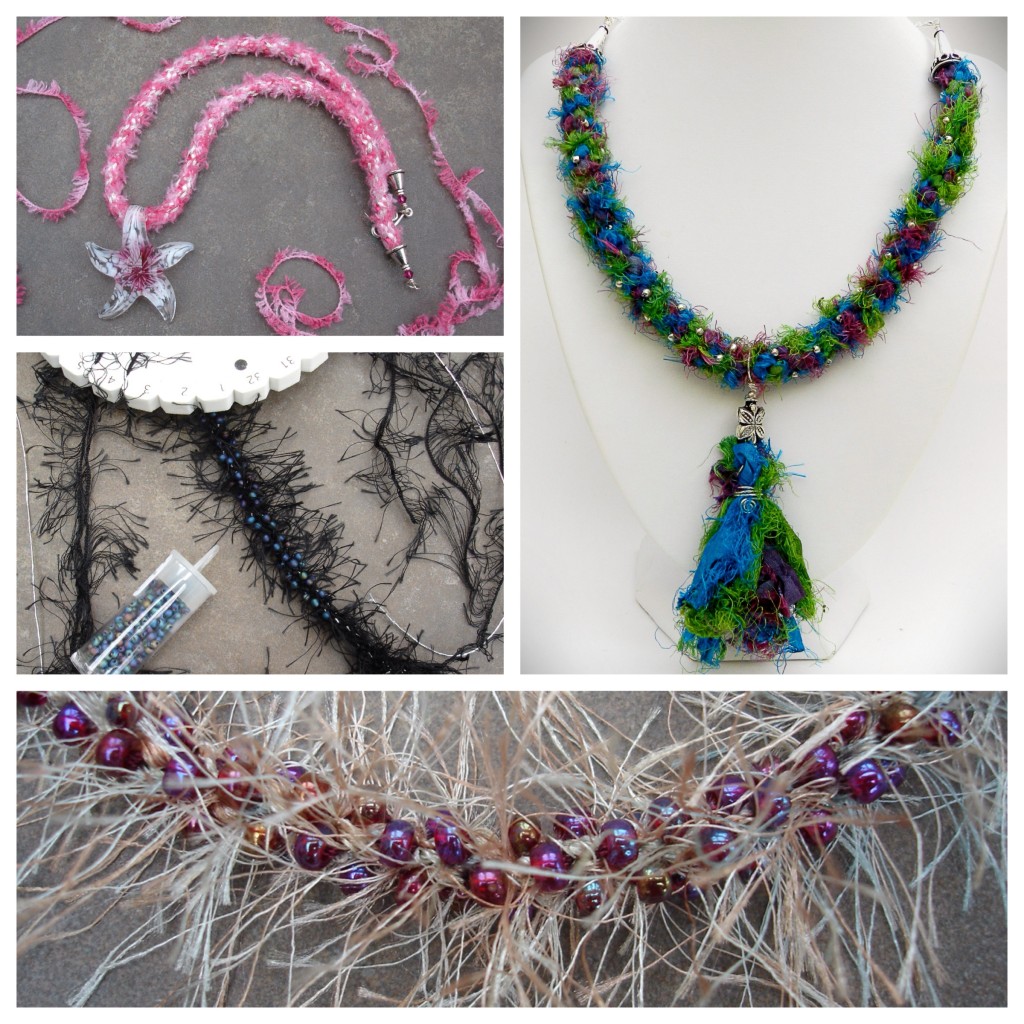A great way to bring some interesting texture and individuality to kumihimo braiding is to explore novelty yarns. These are generally designed for knitting or crochet, but many of them can be used very successfully in braiding. For this blog post I want to concentrate on the hairy/fuzzy ones. A quick look around the shelves of a wool shop will reveal a wide range of these yarns, ranging from those such as eyelash yarn with long, spikey fibres to chenille type yarns with more of a fringed effect. It is a good idea to feel the yarn before making a selection. It is best to avoid anything very scratchy because the effect will be magnified by the braiding. Even the very soft ones may feel a bit too tickly to wear against the skin. This does not need to be too much of a problem because the look of these braids will be warm and cosy, so they are more of a cold weather look and work well worn over a polo neck or with a shirt with a collar. Sari ribbon, which is simply off-cuts of Indian sari fabric cut into strips, works very well in a braid. However, it is very chunky and will stretch the slots on a kumihimo disk, so use an old one. Once the braid has been taken off the disk give it a good trim to tidy up the trailing fibres. The necklace on the top right was made with sari fabric.
The yarns can be used on their own for a very fluffy effect, or can be mixed with other cords and yarns for a smoother look. Satin cord and metallic threads work particularly well. The pink braid is an example of using metallic embroidery thread, 1mm satin cord and chenille yarn.
Try adding beads for a fun look. Shiny, AB or metallic beads look great peeping through the fibres and the drop shape works very well. Experimentation is the best way to find the look you want. Don’t be disheartened if some experiments don’t work out. The black braid made with eyelash yarn, silver cord and matte drops seemed like a good idea, but the result is just horrible! It reminded me so much of the tail of a mistreated pet in one of those pet rescue programmes that I couldn’t even finish the braid. Other people have suggested that it looks like spiders or hairy caterpillers, neither of which I would want to wear around my neck!
During the braiding process much of the hairiness of the yarn will become trapped in the braid and around the beads. Use a small crochet hook or piece of wire to tease out the hairs. The fibres may flatten in use, but a gentle brushing with a soft brush now and then will refresh the fluffy effect.



